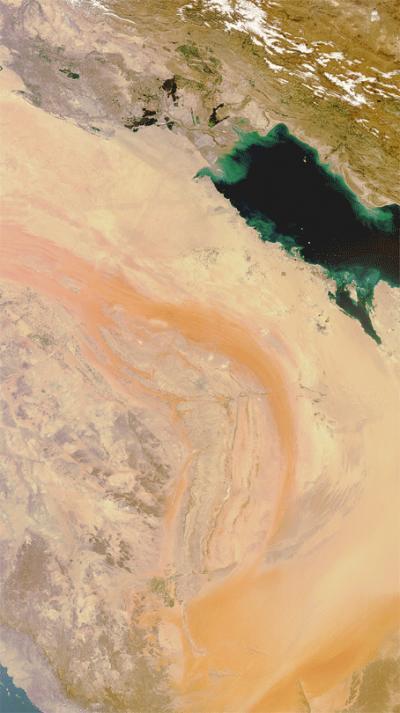Washington, D.C.—On March 17, the tiny MESSENGER spacecraft completed its primary mission to orbit and observe the planet Mercury for one Earth-year. The bounty of surprises from the mission has completely altered our understanding of the solar system's innermost planet. As reported in one of two papers published today on Science Express, scientists have found that Mercury's core, already suspected to occupy a greater fraction of the planet's interior than do the cores of Earth, Venus, or Mars, is even larger than anticipated.
Heavens
Powerful new cells created by Cardiff University scientists from cheek lining tissue could offer the answer to disorders of the immune system.
While the body's immune system protects against many diseases, it can also be harmful. Using white blood cells (lymphocytes), the system can attack insulin-producing cells, causing diabetes, or cause the body to reject transplanted organs.
USC Marshall study finds video capture and other automated systems cut down medical errors and minimize the tendency to operate outside normal procedures.
The Conrad Murray case can obfuscate that the vast majority of grave medical errors happen in hospitals—the places we think are most safe—and are often the result of bad systems. Poor transmission of information and unmonitored interventions yield problems in operations, recovery rooms and regular wards. But how can we minimize interpretive and procedural errors that are the root cause of most medical mistakes?
ESO's VISTA telescope has been trained on the same patch of sky repeatedly to slowly accumulate the very dim light of the most distant galaxies. In total more than six thousand separate exposures with a total effective exposure time of 55 hours, taken through five different coloured filters, have been combined to create this picture. This image from the UltraVISTA survey is the deepest [1] infrared view of the sky of its size ever taken.
Research evidence is key to developing strong health systems, but the assessment of such evidence is not always straightforward. This week in PLoS Medicine, the last paper in a three-part series on health systems guidance addresses the question of how much confidence to place in different types of research evidence, which the authors argue is key to informing judgements regarding policy options to address health systems problems.
Studies using X-ray and ultraviolet observations from NASA's Swift satellite provide new insights into the elusive origins of an important class of exploding star called Type Ia supernovae.
These explosions, which can outshine their galaxy for weeks, release large and consistent amounts of energy at visible wavelengths. These qualities make them among the most valuable tools for measuring distance in the universe. Because astronomers know the intrinsic brightness of Type Ia supernovae, how bright they appear directly reveals how far away they are.
CAMBRIDGE, Mass. -- In December, MIT Media Lab researchers caused a stir by releasing a slow-motion video of a burst of light traveling the length of a plastic bottle. But the experimental setup that enabled that video was designed for a much different application: a camera that can see around corners.
WEST LAFAYETTE, Ind. - Chemical additives that help agricultural pesticides adhere to their targets during spraying can lead to formation of smaller "satellite" droplets that cause those pesticides to drift into unwanted areas, Purdue University researchers have found.
ESA's Envisat satellite has captured images of a sandstorm over Saudi Arabia, Qatar, Bahrain and southern Iraq and Iran.
The animation shows two images of the region: the first captured on 10 March and the second on 18 March.The latest image shows how sand has swept over the Persian Gulf States in recent days, extending some 1500 km north to south.
Over the past few days, strong winds have whipped up dust and sand, causing low visibility and grounding flights across the region.

An exploding star known as a Type Ia supernova plays a key role in our understanding of the universe. Studies of Type Ia supernovae led to the discovery of dark energy, which garnered the 2011 Nobel Prize in Physics. Yet the cause of this variety of exploding star remains elusive.
WEST LAFAYETTE, Ind. - While scientists believe conditions suitable for life might exist on the so-called "super-Earth" in the Gliese 581 system, it's unlikely to be transferred to other planets within that solar system.
The first observation of a cosmic effect theorized 40 years ago could provide astronomers with a more precise tool for understanding the forces behind the universe's formation and growth, including the enigmatic phenomena of dark energy and dark matter.
The new political appetite for 'localism' in town planning has triggered anxiety within local communities and amongst those charged with making it work, according to new research funded by the Economic and Social Research Council (ESRC).
Edward Olsen of NASA's Jet Propulsion Laboratory in Pasadena, Calif. creates imagery using data from the Atmospheric Infrared Sounder (AIRS) instrument that flies onboard NASA's Aqua satellite. Olsen created imagery from a satellite overpass during the morning hours today, March 19. He said, "The infrared and microwave images show the early phase of the convection blow-up."
NASA's TRMM satellite added up the rainfall generated from Cyclone Lua as it made landfall in northern Australia on March 17, and tracked southward through March 19. The largest rainfall amounts appeared just off the coast before Lua made landfall, and continued generating heavy rainfall as it moved inland.